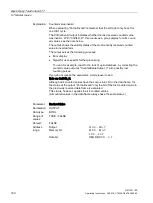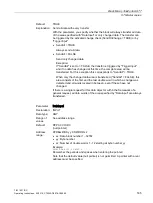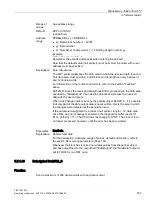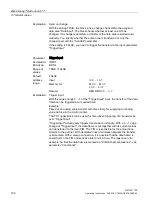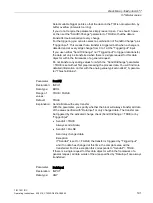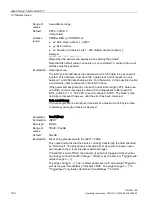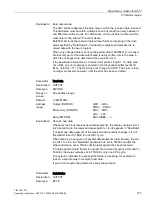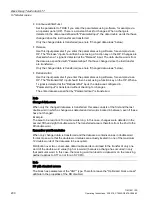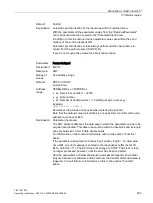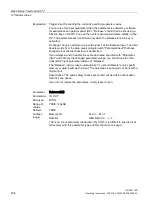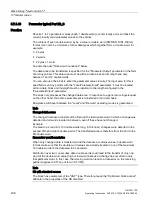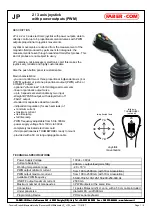
Block library TeleControl ST7
5.7 Master copies
TIM 1531 IRC
194
Operating Instructions, 02/2018, C79000-G8976-C468-02
If a change was detected in the data segment, the status bit 0 is also set to TRUE in
"NewData" for one CPU cycle. This makes it possible to recognize which segment of the
output data area has changed.
Note
When receiving a sequence of several data segments (data frames), the status bits 1 to 22
in the "NewData" parameter are set to TRUE one after the other and remain set to TRUE
until the last segment has been received.
If a data segment (data frame) is not part of a received sequence (SendAll = FALSE), the
status remains set to TRUE for only one CPU cycle.
To ensure data consistency when "SendAll"= TRUE or during a general or single request,
the data area is updated in consecutive individual segments.
During receipt, the status is indicated by the "DataStatus" output byte ("SequenceState"
status). If the receive sequence was completed successfully, the data output area is up-to-
date and the output data is consistent. This is indicated by "DataStatus" ("DataValid" =
TRUE status).
Note
The consistency of the data segments or the limit segments cannot be guaranteed if the
"SendAll" parameter was set to FALSE on the sender.
Receipt of a sequence can be disrupted by the following causes:
●
The receive sequence was interrupted when communication to the partner fails during an
active sequence (event ID B13BTD7_Diagnostics).
●
The monitoring time was exceeded. Not all segments could be received within the time
set for the "MonitoringTime" parameter (event ID B13CTD7_Diagnostics).
●
Other receiving errors occur (event ID B13DTD7_Diagnostics), for example:
–
A new receive sequence is registered during an active, error-free sequence.
–
A spontaneous segment (data frame) is received during an active sequence.
Note
Dat256D_S and Dat256D_R require the UDT "TransmitBlock".
When using the typical, copy the UDT from the global library into the "PLC data types"
directory of the CPU. The UDT is automatically referenced by the typical from the block
dictionary of the CPU, but not from the global library.
Note
DB with standard access
The block has parameters of the "ANY" type. Therefore, leave the "Optimized block access"
attribute in the properties of the DB disabled.

